What is Kefir & How to make Kefir
Kefir is a fermented milk drink that is similar to yogurt. It can benefit a person’s health in many ways. Learn What is Kefir and how to make kefir in this article!
This recipe was originally published in my cookbook; Fermented Foods at Every Meal
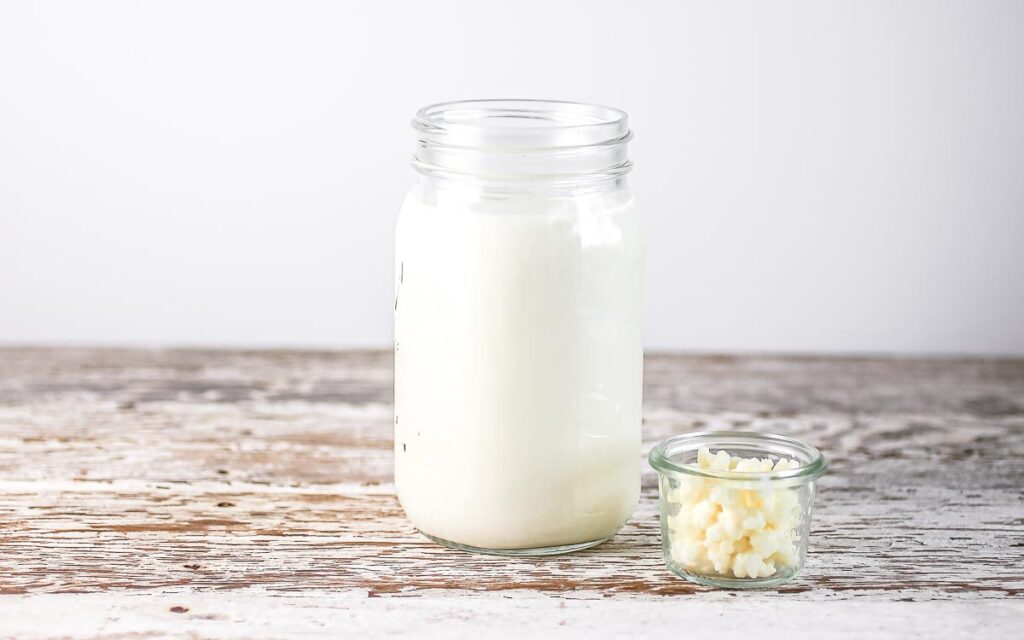
Kefir (pronounced keh-FEAR) is a probiotic-rich drink—similar to yogurt, but thinner in consistency.
The cultured milk drink originated in the North Caucasus, traveling to Russia where it spread to eastern Europe and the United States. Historically it has been made with the cow milk, goat milk, or sheep milk.
Kefir is made from gelatinous white or yellow particles called grains. This makes kefir unique, as no other milk culture forms grains. These grains contain the bacteria-yeast mixture clumped together with casein (milk proteins) and complex sugars. They look like pieces of coral or small clumps of cauliflower and range from the size of a grain of wheat to that of a hazelnut. The grains ferment the milk, incorporating their friendly organisms to create the cultured product.
Health Benefits of Kefir
Is Kefir good for you? The short and easy answer is YES! Kefir is an extremely healthy food.
Kefir is full of healthy bacteria and yeasts that offer crazy-good probiotic power. The particular combination of bacteria in kefir is much more powerful than that found in yogurt and other fermented dairy products when it comes to promoting gut health. Homemade kefir made with milk kefir grains usually contains around 50 strains of live bacteria, microorganisms, nutrients and yeast. Compare that with regular store-bought yogurt, which usually contains only about two major strains and you’ll see the kefir benefits!
Kefir Health Benefits:
- Improves digestion and digestive health with it’s good bacteria, plus it can boost the immune system
- Increases the population of desirable bacteria and eliminates some of the harmful bacteria in the gut
- Helps with gastrointestinal problems such as constipation, diarrhea, and bloating
- Has been used in the treatment of candidiasis (a fungal infection caused by candida), allergies, metabolic disorders, and many more conditions
- Contains important minerals (calcium and magnesium) for a healthy nervous system
- Contains the essential amino acid tryptophan, which has a relaxing effect on the nervous system and can be beneficial for people with sleep disorders, ADHD, or even depression
In addition to all these possible benefits, many individuals with lactose intolerance (aka those who cannot digest lactose) can handle kefir because the bacteria pre-digests the lactose (milk sugars) in the milk during the fermentation process!
Kefir is has antibacterial properties and can reset the gut microbiome, making it helpful for those looking to improve bone health, diabetes/reduce blood sugar levels, risk of osteoporosis, irritable bowel syndrome (ibs), asthma, regulate blood sugar, ulcers and those fighting cancer cells.
How to Make Kefir
Kefir is the easiest cultured food/beverage to make. You only need a few basic supplies along with Kefir grains and high quality whole milk. I suggest organic whole milk (grassmilk, if possible) and raw milk is best, but it can be hard to find in many areas.
Kefir grains can be purchased online, but most often they are shared between friends when the grains multiply with each batch.
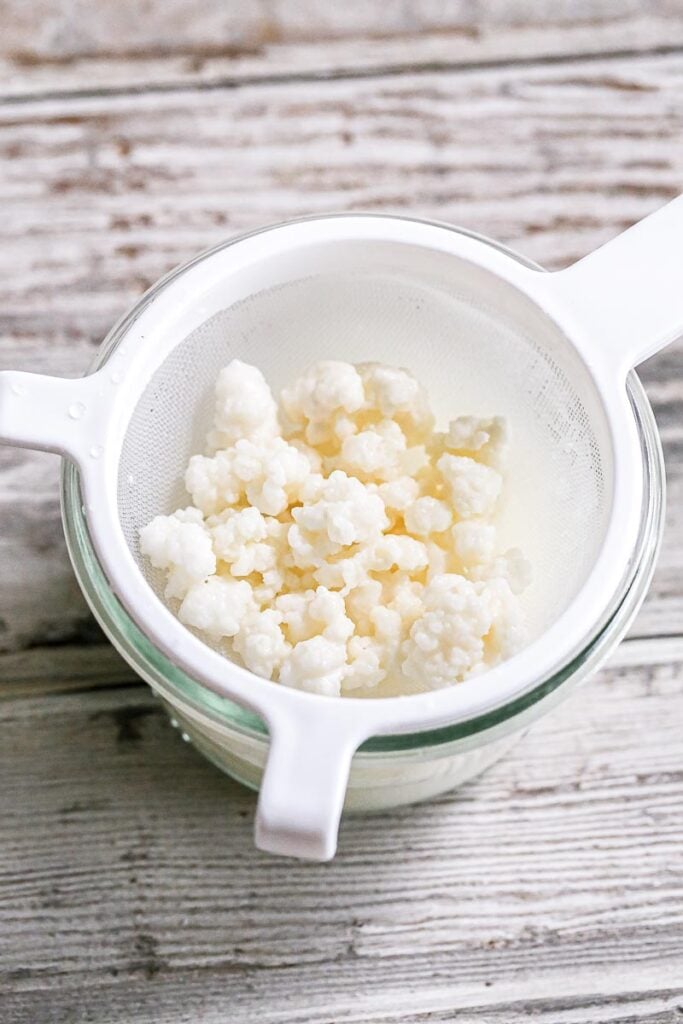
You simply mix the kefir grains with milk in a jar or similar container, cover with cheese cloth and let the sit on your kitchen counter over night…
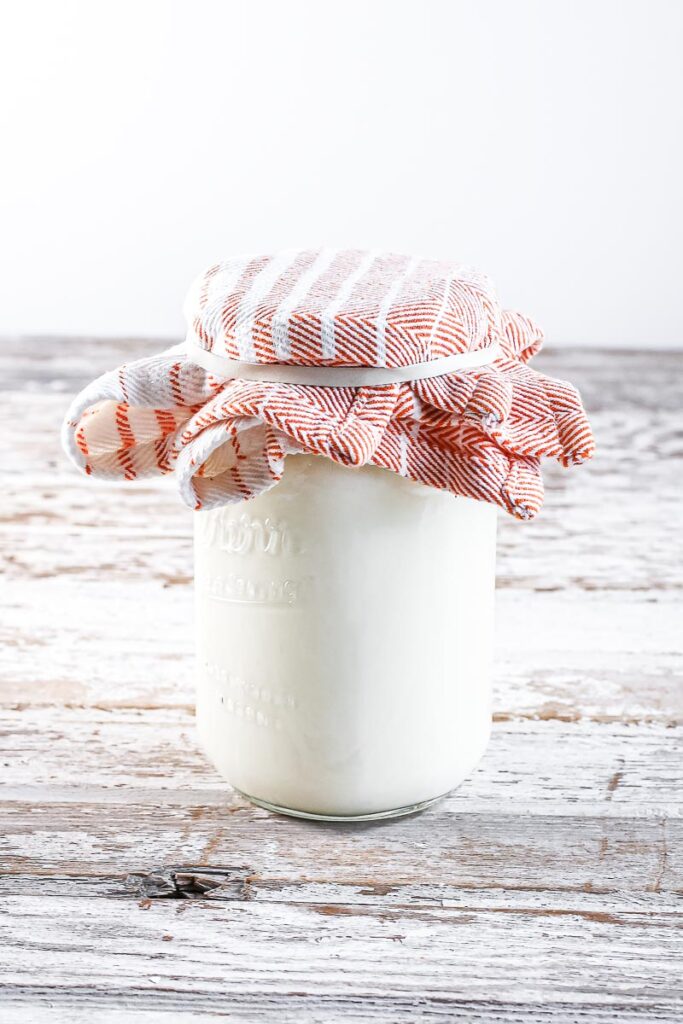
The next day you strain the kefir from the grains.. healthy grains can be reused indefinitely to make kefir!
What does Kefir Taste Like?
Finished kefir will have a flavor that tastes a bit tart and tangy. Some may describe it as sour, but it should not taste like spoiled milk. The tartness depends on how long it’s allowed to ferment.
Your kefir might even be bubbly or effervescent. Temperature and the amount of time the kefir is left to culture will affect not only the taste, but also the thickness. Kefir will ferment slowly in cooler temperatures and more quickly if your home is warmer. A thicker kefir is achieved by allowing your mixture to culture for longer periods of time.
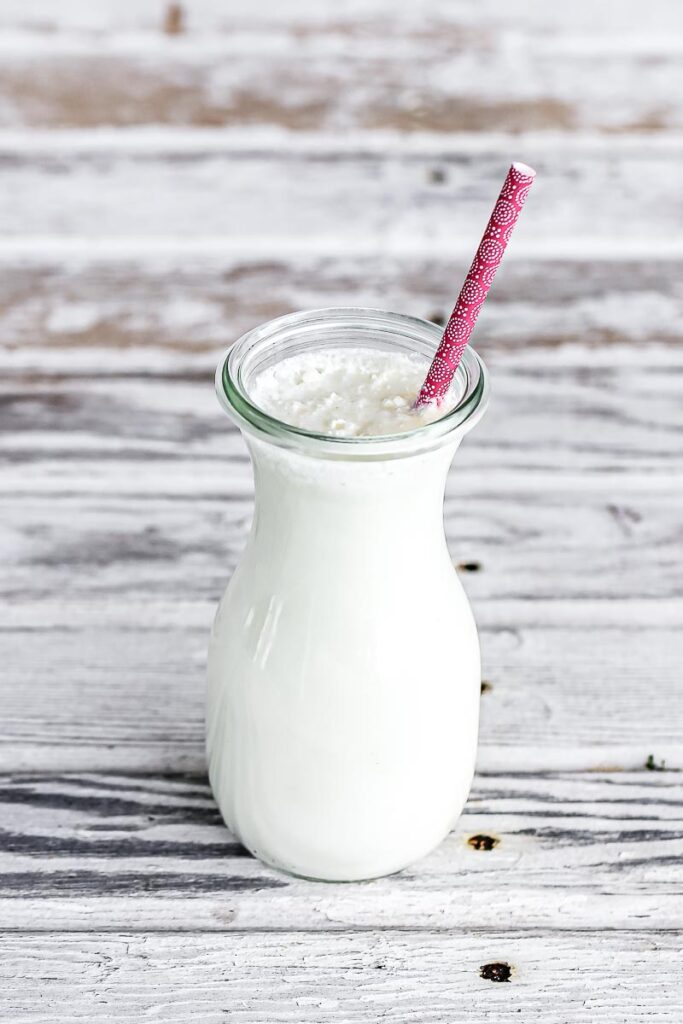
How to use Kefir
You can drink it kefir plain, although many people sweeten it with a bit of maple syrup or honey or blend it with fresh fruit. Kefir can also be used in a variety of delicious recipes that can be found in my book; Fermented Foods at Every Meal – get your copy HERE!
- Grilled Fish Tacos with Fermented Cilantro Kefir Sauce
- Overnight Berry Kefir Chia Oatmeal
- Probiotic Chocolate Peanut Butter Banana Smoothie with Kefir
- Pineapple Kefir Sorbet; Healthier Dole Whip made with kefir
- Probiotic Ranch Dressing made with Kefir
How to Care for Kefir Grains:
Combine kefir grains with fresh milk for a new batch, or store them in the refrigerator covered with a little milk if you’re not ready to make another batch. Refrigerated grains will become semi-dormant, so this is a good option if you’re going away or don’t want to make kefir for a few days. (Keep in mind it will take cold grains longer to ferment, so only refrigerate them if you’re not planning to make a new batch right away.)
When making a new batch of kefir, there is no need to rinse the grains. In fact, when a little bit of the previous kefir is allowed to remain with the grains, it will keep them stron- ger. Rinsing grains is only necessary if they have been dropped or contaminated. (For example, if you accidentally pour in coconut milk instead of cow’s milk, or your strainer goes sideways in the sink.) When you rinse, use only fresh distilled or spring water, never water from the tap because it can contain fluoride, chlorine, or other contaminants.
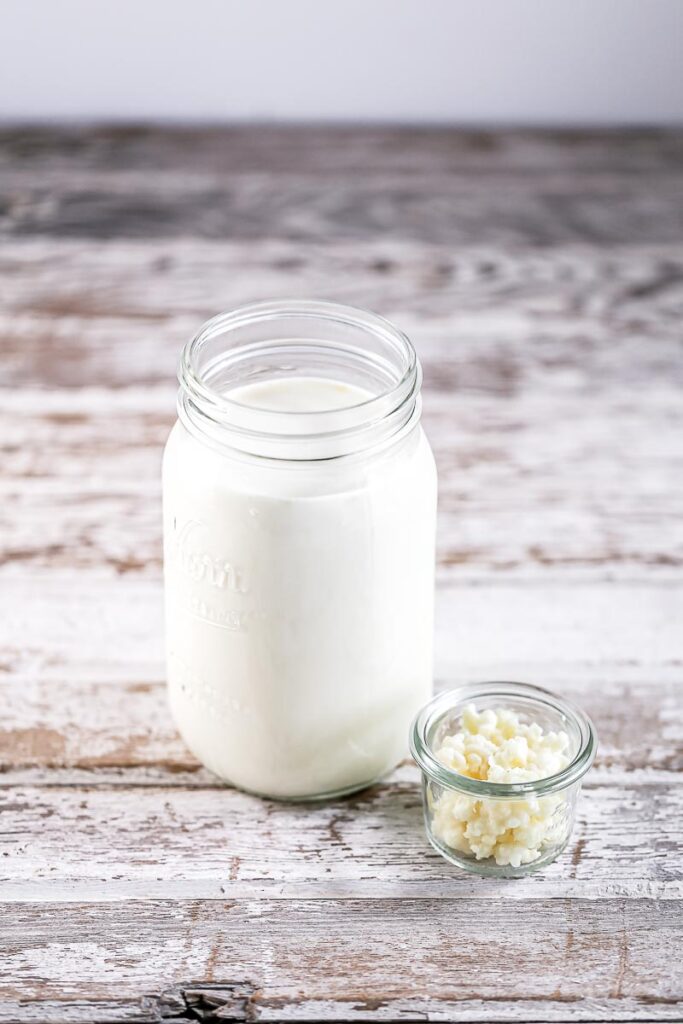
How to preserve Kefir Grains
One of the biggest complaint of making your own kefir is that the grains seem to exponentially replicate, leaving you with so many extras. This gives you a great problem and the best solution is to share them with friends and family.
However, if you want to save some kefir grains for later there are a few ways that you can preserve them.
- How to freeze kefir grains – Strain the grains from kefir and rinse them under non-chlorinated water. Then, put them on the paper towel and gently tap them to dry them or leave them to dry for a few hours. You can put dry grains into plastic or glass jar or plastic bag to store them for up to 6 months in the freezer.
- How to dehydrate kefir grains – Strain the grains from kefir and rinse them under non-chlorinated water. Then, put them on the paper towel and leave them to dry at room temperature for 3 to 5 days, depending on humidity and room temperature. Or you can use a dehydrator as long as the grains do not get heated above 85°F. Store dried milk kefir grains in an air-tight bag; add a small amount of powdered milk. Store in refrigerator for up to 6 months.
- What is the BEST way to preserve Kefir Grains? The best way to preserve kefir and kefir grains is to Freeze Dry them. Freeze drying (using a freeze drying machine) preserves the most probiotics and nutrition while being shelf stable for 25+ years. To learn more about benefits of Freeze Drying, CLICK HERE
Kefir FAQ
How long does kefir last?
Perhaps the better question is, How long does kefir last in the fridge? Generally speaking homemade kefir will last 2-3 weeks when kept in the refrigerator. If you are consuming store-bought, consult the best by date on the packaging.
How long does kefir last once opened?
As I mentioned in the above question, always refer to the Best By date on the product packaging for store bought items. When in doubt kefir kefir is typically most delicious for 2-3 weeks.
Is kefir keto?
There is roughly 10 grams of carbohydrate in 1 cup of kefir. Consuming kefir on a keto diet will be largely determined by your daily maximum of carbohydrates and other foods consumed at the same time. For most people following a keto diet, Yes Kefir is a keto friendly food.
Is kefir vegan
Kefir is made from the milk of cows, sheep or goats therefore it is not vegan.
Are Buttermilk and Kefir the same?
Kefir vs buttermilk; Kefir is a beverage made from kefir grains and the milk of sheep, goats or cows, while buttermilk is a fermented product that is created by increasing the acidity of cow’s milk.
Milk kefir vs water kefir, what’s the difference?
Traditionally kefir is a cultured milk product but you can also make water kefir, this post is only about milk based cultured kefir.water kefir vs milk kefir. Water kefir takes special kefir grains that only work in water based applications.
What types of Probiotics are in Kefir?
There are several strains of beneficial probiotics in kefir including: Lactobacillus acidophilus, Bifidobacterium bifidum, Streptococcus thermophilus, Lactobacillus delbrueckii subsp. bulgaricus, Lactobacillus helveticus, Lactobacillus kefiranofaciens, Lactococcus lactis, lactobacillus plantarum, Lactobacillus kefiri, lactic acid bacteria, and Leuconostoc species.
Can Kefir be made with Soy Milk?
Soy milk can NOT be made using milk kefir grains.
Can I use milk kefir grains in fruit juice?
No you cannot use milk kefir grains to ferment or culture fruit juice. They will not work in coconut water either.
Is kefir Gluten Free?
Yes Kefir is gluten free, there is NO gluten in kefir, milk or kefir grains.
Can Kefir cause diarrhea or constipation?
I always suggest starting slowly when adding any NEW food especially those that are fermented or cultured. The probiotics found in Kefir and similar foods can cause side effects like bloating, nausea, intestinal cramping, diarrhea and constipation, when first started. These side effects will decrease as your tolerance and body’s gut microbiota adjusts in your gastrointestinal tract. If you are not consuming any fermented or cultured foods now you are most at risk for symptoms or an inflammatory responses as your body rebalances and the beneficial effects take over.
Are there any dangers of kefir?
Kefir is not a dangerous food. There are minimal risks when consuming kefir, all of which are only seen during the first few times of consuming as your body adjusts.
Can you eat Kefir Grains?
Can You Eat Them? Yes, and they have numerous beneficial properties including minerals like calcium and phosphorous. Kefiran is one such property that abides on the surface of kefir grains and this is what makes them gooey. Kefiran is an insoluble polysaccharide constructed of galactose and glucose.
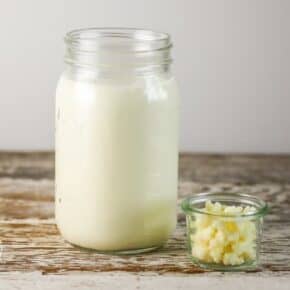
How to Make Kefir
Equipment
Ingredients
- 2 tablespoons milk kefir grains
- 2 cups Whole Milk
Instructions
- Add the kefir grains and milk to a glass jar. Stir gently using a wooden spoon.
- Cover the jar with cheesecloth secured with a rubber band or string and allow to ferment at room temperature (but out of direct sunlight) for 12 to 48 hours.
- You can taste the kefir to see whether it has properly fermented, or watch for the whey (a clear yellowish liquid) to separate at the bottom of the jar. You may have small pockets of whey throughout the kefir.
- Pour the kefir through a small fine-mesh strainer into another clean jar, collecting the kefir grains in the strainer for use in another batch.
- Chill the kefir, covered, for the best taste results. Store in the refrigerator for up to 2 weeks.

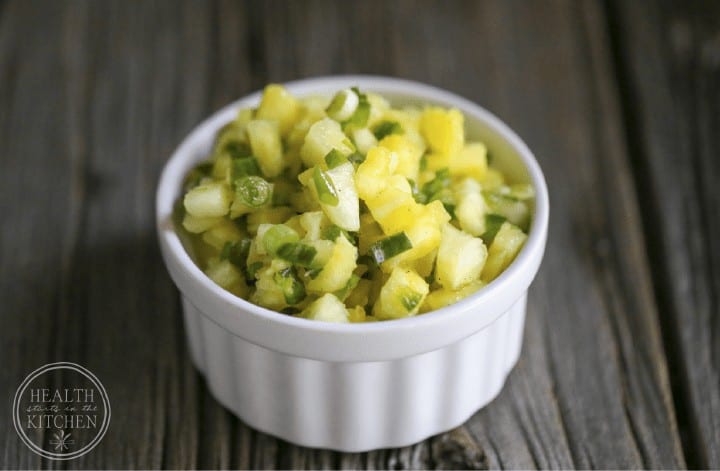
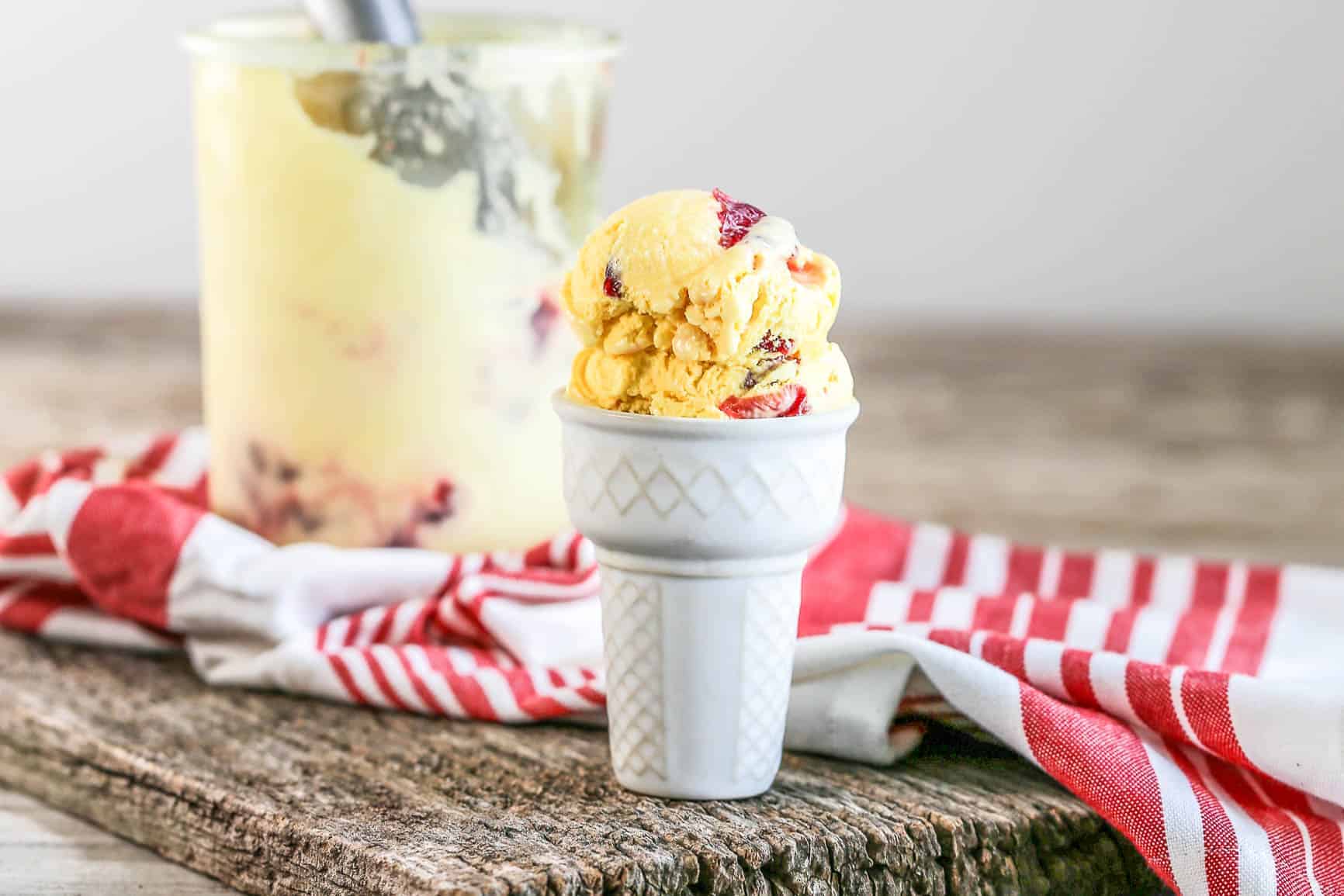

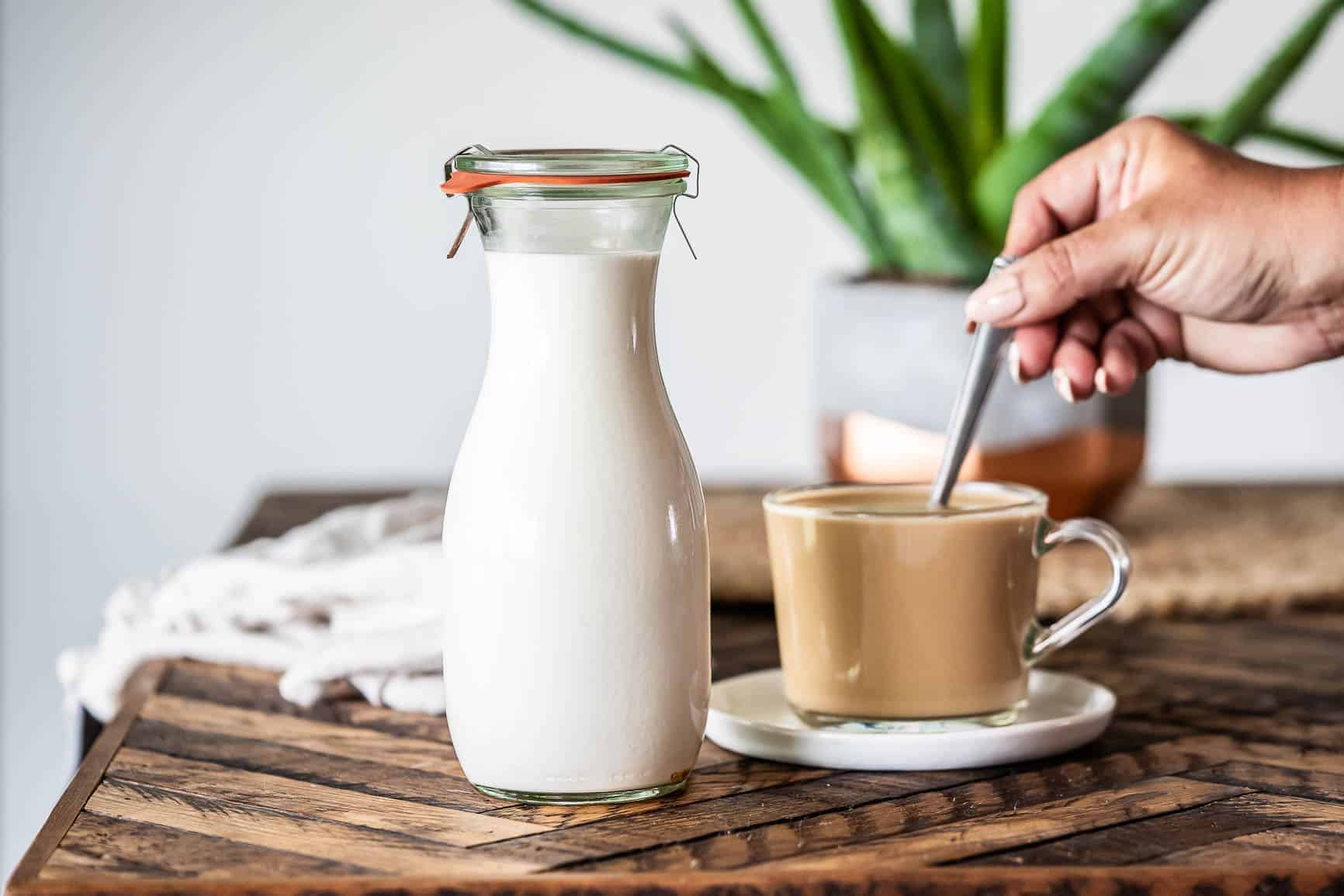

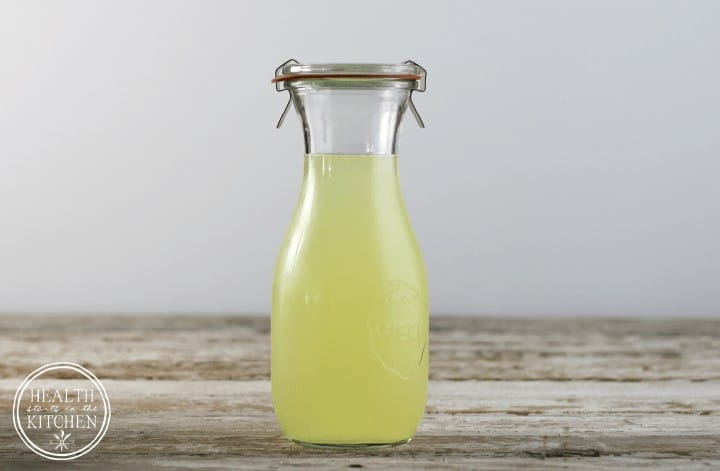
Hi Haley. I’m looking forward to receiving your emails. Looking to learn for my dogs, Shorty and Lucy. They won’t eat their regular dog food any more. Looking for natural recipes and help with their overall health.
It just hit me…this looks like raw cheese curd (the old fashioned Swedish name is ostkaka) that I have made with my mother and mother-in-law. Made using rennet tablets. I wonder if this is similar? So interesting learning about these old fashioned recipes and remedies that my grandma made from the old country. Wish she was still here to share with me.
Can I use almond or coconut milk to make kefir instead of cow’s milk?
Although I have not made it myself, I have heard that other do but you HAVE to use a special strain of kefir grains specifically for the type of dairy-free milk you are using. And it won’t be as beneficial.
Hi!
Oh my gosh. I love love love your blog. I cannot wait to make the dog treats for treating fleas, allergies, itchy skin etc,.
If I make my own Kefir. Would Almond milk work in place of milk? Can Milk be replaced with something else with the same benefits? Thank you!
There are ways to make non-diary kefir but I am not familiar with them – I tend to feel that cultured dairy is more beneficial.